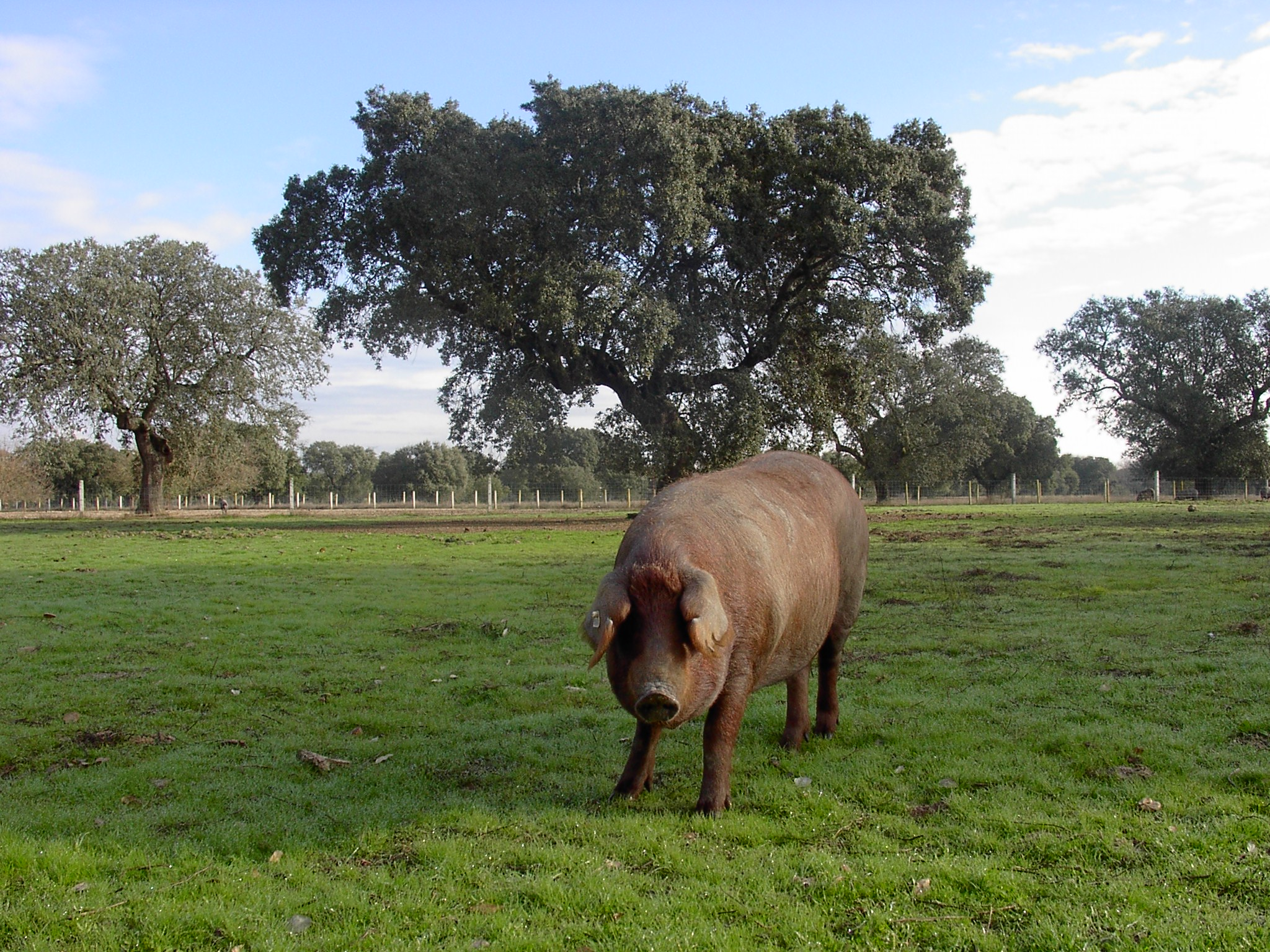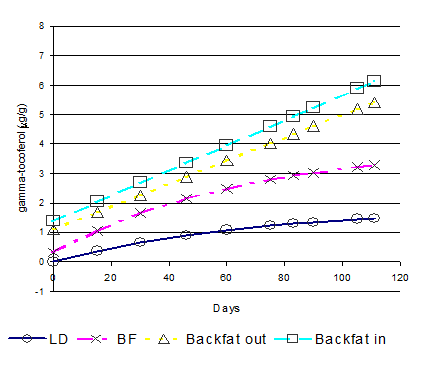TRACEABILITY IN PRODUCTS FROM IBERIAN PIGS
|
Description |
 Iberian pig in free-range.
Iberian pig in free-range.
It has been developed a procedure based in tocopherol quantification in tissues from Iberian pigs (fat mainly) in order to determinate the feeding background during the fattening phase.
The classification criterion of iberian pig carcasses that has been used latelly and based in the fatty acid profile has lost validity due in part to the formulation of feeds that include new ingredients which provides a similar fatty acid profile to acorns. The quantification of alpha and gamma tocopherols accumulated in tissues has demostrated to have a high feasibility for the differentiation of the three categories of pigs defined in the Quality Norm of the Iberian pig (free-range with acorns, grass in located fences and comercial feeds).
This eficiency in classification is achived thank to the feeding that pigs intake during the free-range phase which is characterized by having a high content of alpha-tocopherol in the grass, and a high concentration of gamma-tocopherol in acorns, hence, these compounds are accumulated at high concentration in animal tissues. However, there is not any ingredient that could be added to comercial feeds in such proportion that allows to reach similar level of gamma-tocopherol in tissues, and neither exist a posibility of adding the natural form of gamma-tocopherol to feeds in order to reach the accumulation level obtained in pigs fed on acorns exclusively.
It is an easy, fast and feasible method that it is available for the Iberian pig producers as predictor of the economic value to obtain for their pigs, for the meat industry as a measurement of quality control, for dealers control, etc.
|
How does it work |
It consists on an analytical procedure that allows to differentiate the feeding background of Iberian Pigs by its subcutaneous fat analysis. The procedure is based in the quantification of liposoluble compounds by liquid chromatography (HPLC). Specifically, the quantification of gamma-tocopherol that the animal ingest by the consumption of acorns and alfa-tocopherol that the animal ingest by grass feeding.
Gamma-tocopherol is absorb and accumulated directly related to the acorns consumption. Hence, it can be stablish a relationship between this compound and the kilograms that pigs fatten in free-range.
This compound appears in minimal amount in pigs fed with feeds, so the determination of gamma-tocopherol content allows the differentiation of those pigs fed with feeds from those fed exclusively with acorns or also those that have been fed with an amount of acorns and have been finished with feeds.
The analytical procedure consists on the saponification of a minimal amount of fat, extraction and concentration of unsaponifiable compounds by organic solvents and finally separation by liquid chromatography in an unpolar column of reverse phase using polar solvents, appearing both compounds in a shorter time of 10 minutes.
It has been obtained reference values of the minimal amount of gamma-tocopherol that pigs should have in base to their feeding. Taking into account these reference values it has been obtained regression equations that allows to estimate kilograms put on weight in free-range.
|
Advantages |

Accumulation of gamma-tocopherol in the adipose tissue of the Iberian pig according to the days of stay in free-range.
- The analytical procedure is faster and its cost lower compared to other analytical methods.
- It can be carried out in tissues of low commercial value like fat and using a minimal amount of sample.
- Allows to differentiate with feasibility higher to 90 % pigs fed on commercial feeds from those Iberian pigs fed on acorns, being an important quality control tool in the meat and cured meat products industry.
- Allows the evaluation and control of raw material from dealers in the industry of elaborated products.
- Measurement to stablish a precision feeding in the feed formulation based in the obtaining of high- antioxidant power products of high nutritional value for consumers.
|
Where has it been developed |
The procedure was developed in the Animal Production Department of the Veterinary Faculty from the Complutense University of Madrid, and comes from a long process of study that started in 1993 from the Doctoral Thesis carried out by Ana Rey which was concluded with the publication of an invention patent in 2008. At present, this procedure is one of the main potential analytical tools of the research group.
|
And also |
The research group provides analytical and technical support to companies from the meat sector and look for public or private collaborations with the meat industrial sector or pig feeding that have interest in quality improvement of their products, quality, control support or improvement of feeding livestock in order to obtain products of higher value.
|
Contact |
|
© Office for the Transfer of Research Results – UCM |
|
PDF Downloads |
|
Classification |
|
Responsible Researcher |
Ana Isabel Rey Muñoz: anarey@ucm.es
Department: Animal Production
Faculty: Veterinary Medicine


